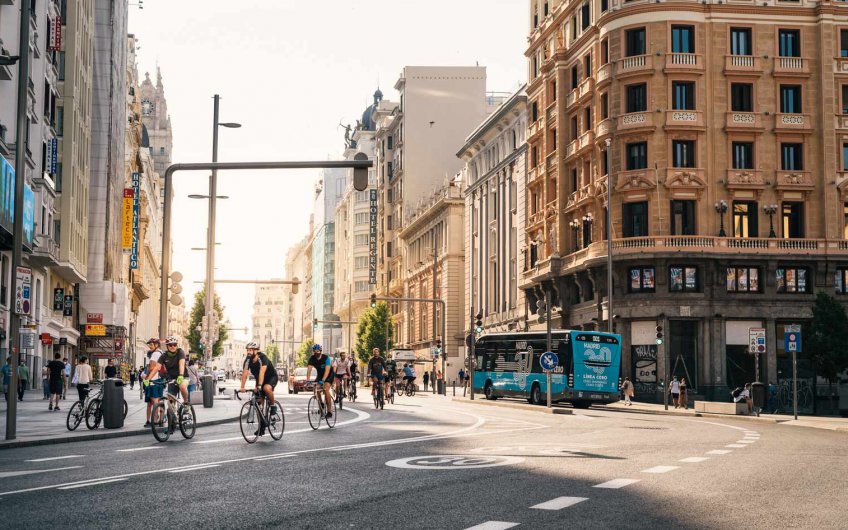
Always take into account the road rules for cyclists that must be met are essential for cooperation with other road users. However, they are often overlooked, but today we are going to detail the road rules that every cyclist must comply with according to the DGT.
Firstly, the helmet must be homologated and is compulsory for those under 16 years old and for all drivers of legal age as long as they travel in interurban areas.
From the age of 16, they are not obliged to use a helmet when riding on urban roads.
With regards to lighting, bicycles must have white front and red rear position lights and a non-triangular rear reflector.
According to current regulations, the use of any device (either mobile phones, music players, or any other similar device) is strictly prohibited.
The current regulations state that, on bicycles, for only one person, you are allowed to carry a passenger in an approved additional seat: if the passenger is under 7 and the driver is of legal age.
No cyclist must exceed the permitted rate of more than 0.25 ml of alcohol per litre of air and 0.5 g/l of alcohol in the blood.
First of all, we must check beforehand that no vehicle is approaching. We must look back to see that they are far away from us. It is also mandatory to signal the manoeuvre of merging onto the road, for this, the arm should be extended horizontally
We must ride in a single row or a maximum of two. It is forbidden to go in groups blocking the road.
If there is a right of way with respect to the motor vehicles, the cyclist will have to go in the cycle lane, cycle path or by the duly marked shoulder.
It will have also right of way when the motor vehicle is going to turn, either to the left or to the right, to turn onto another road and the cyclist is close or when riding in a group the first cyclist has begun to move.
You must give way to a correctly signposted pedestrian crossing or when you are going to turn to access another road and there are pedestrians, even if there is no crossing for them.
Firstly, the signage of the agent must be respected with arms signals.
It is also recommended to give way if we are facing a red or amber traffic light, in case the cyclist cannot brake safely.
Likewise, it is advisable to respect the signal of giving way, when there is a give way sign, if vehicles came by a priority road. A STOP sign must be respected in all cases, without exception.
To turn right, we need to go as close to the right side of the road, checking if the traffic situation allows us to make the turn in complete safety. To signal the manoeuvre, we must extend the left arm out, bent upwards, with the palm open.
If we would like to make a left turn, there is more to think about.
Firstly, if the road is one-way: we must place ourselves on the left-hand side of the road and we must signal our manoeuvre well in advance: we will use the left arm, with the palm of the hand facing downwards.
Secondly, if the road is two-way: it is necessary to be placed on the longitudinal mark of separation or median and in the case that it did not exist, on the axis of the road, always without invading the opposite lane.
Thirdly, if the road has a special lane for this turn (urban or interurban area): we must get into this lane and carry out the manoeuvre whenever it is allowed.
And, finally, if the road does not have a special lane for that turn, in order to carry out the corresponding manoeuvre, we will have to go to the right, outside the roadway whenever the circumstances permit and later, perform the manoeuvre.
We will give sufficiently warning in advance and, later, we will check that there is a safe distance so that overtaking does not put at risk or hinder road users driving in the opposite direction. The lateral safety distance shall not be less than 1.50 metres.
Every cyclist is completely forbidden to travel on dual carriageways or motorways, as a general rule.
As we mentioned before, in order to ride a bike we must consider the factors established by the DGT as general regulations. To do so, we always insist on respecting the traffic regulations for cyclists, as well as other users of the road.